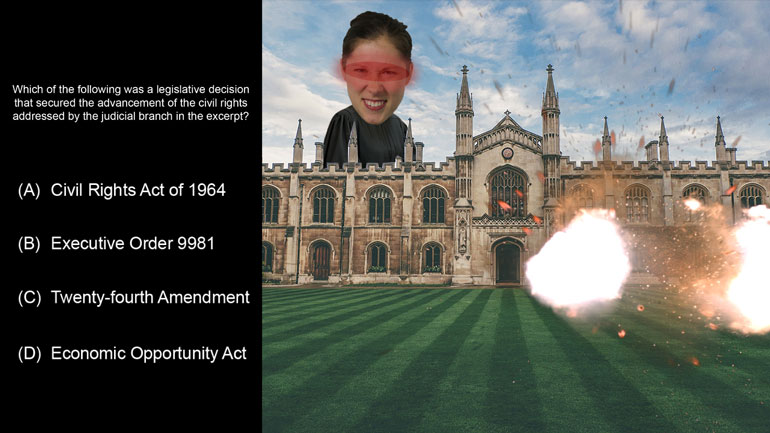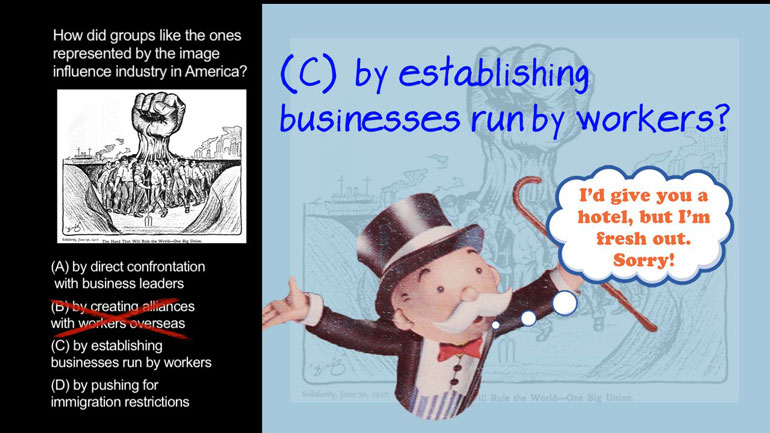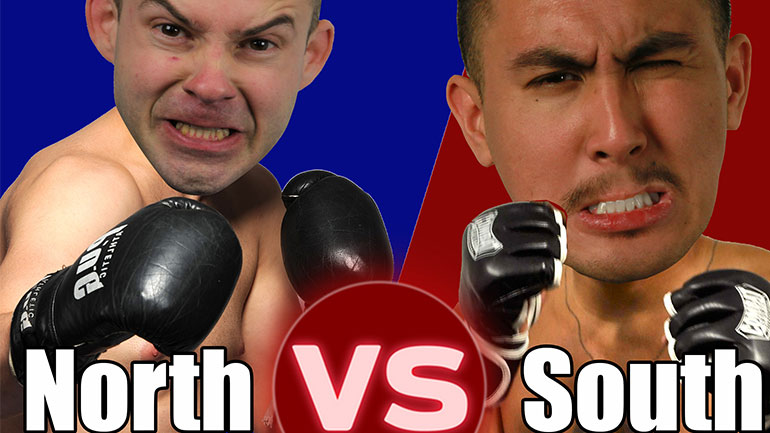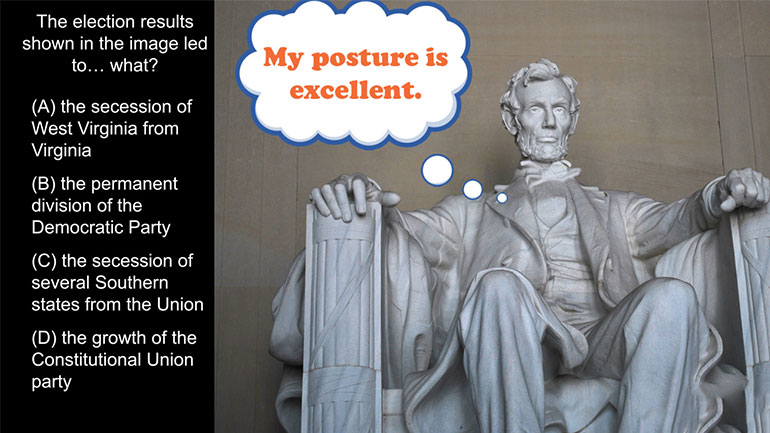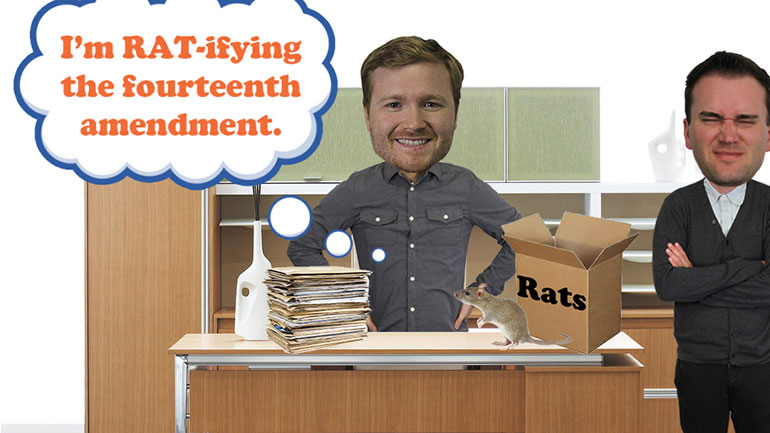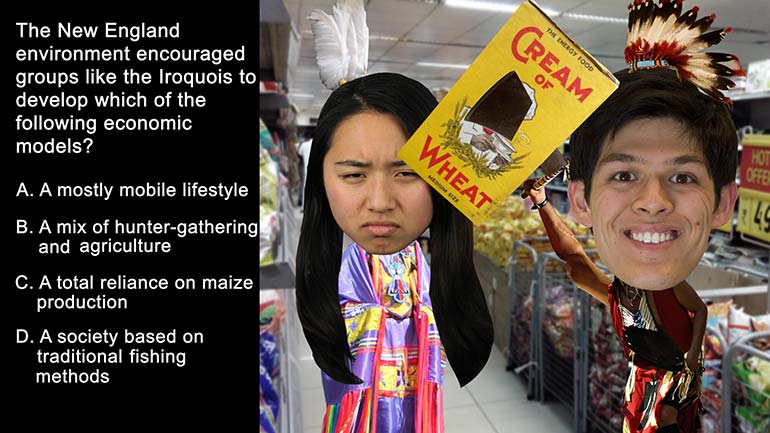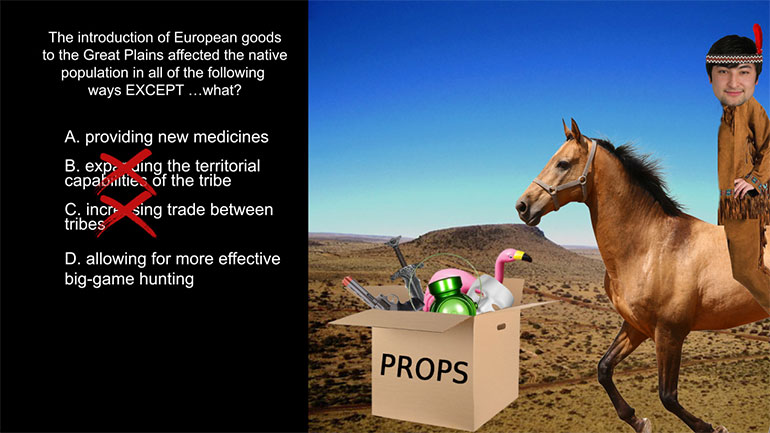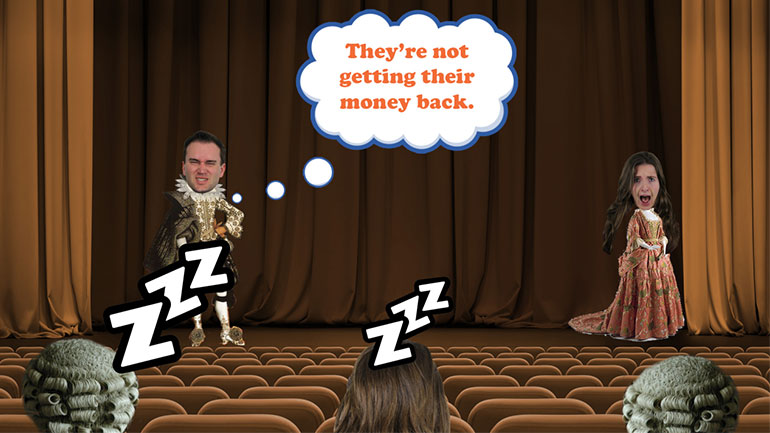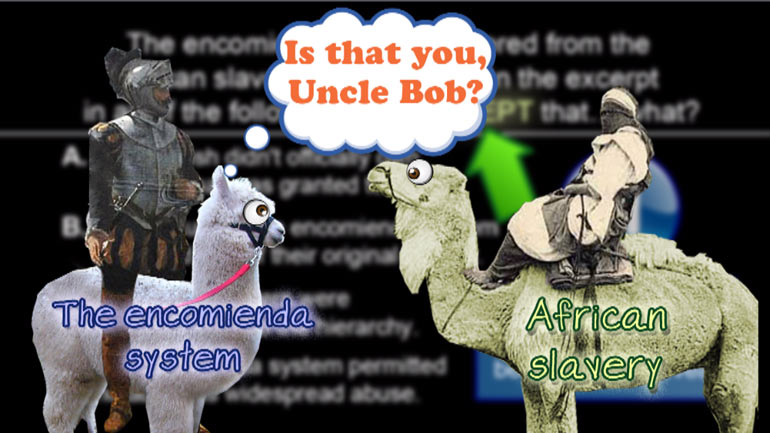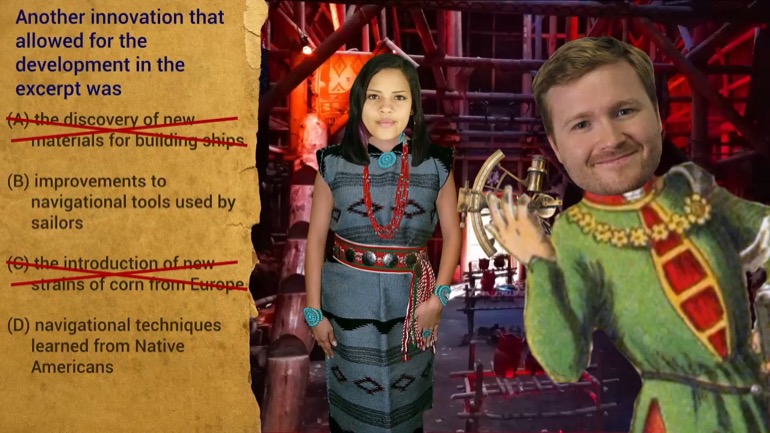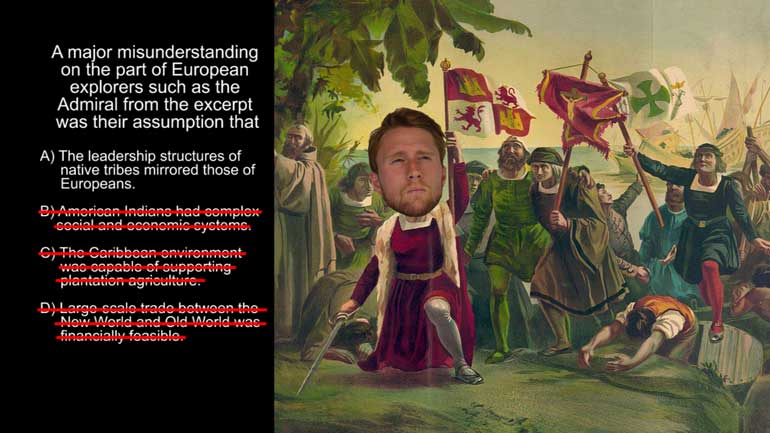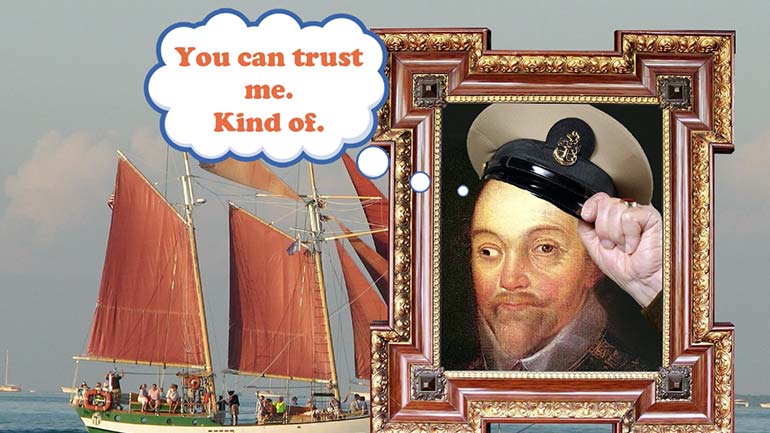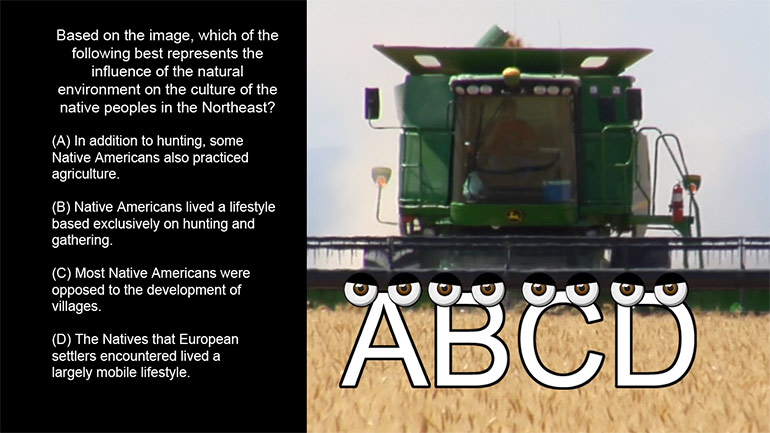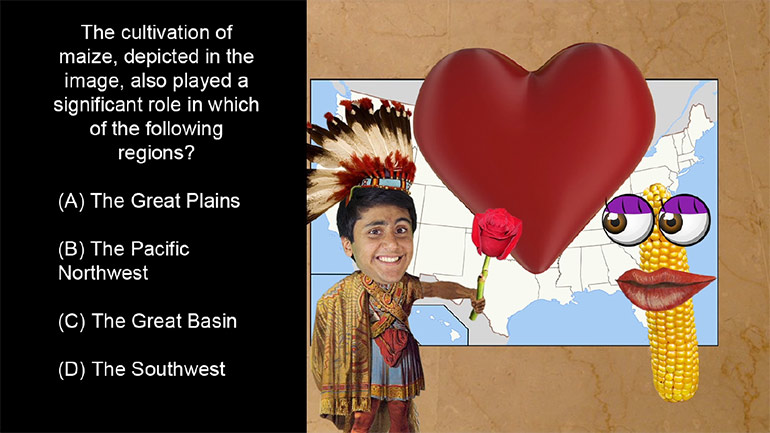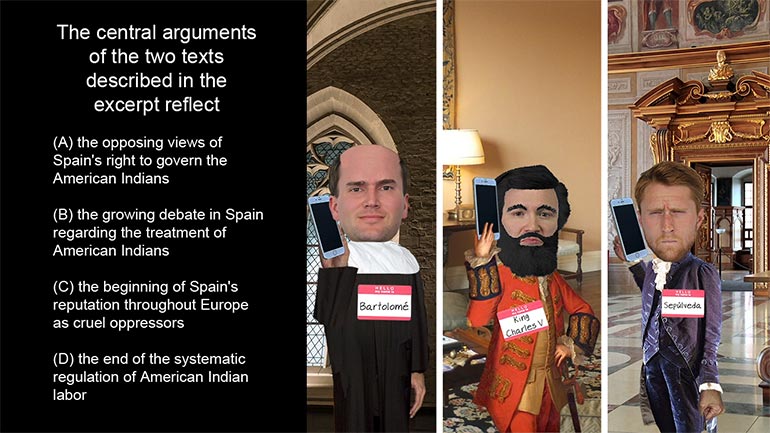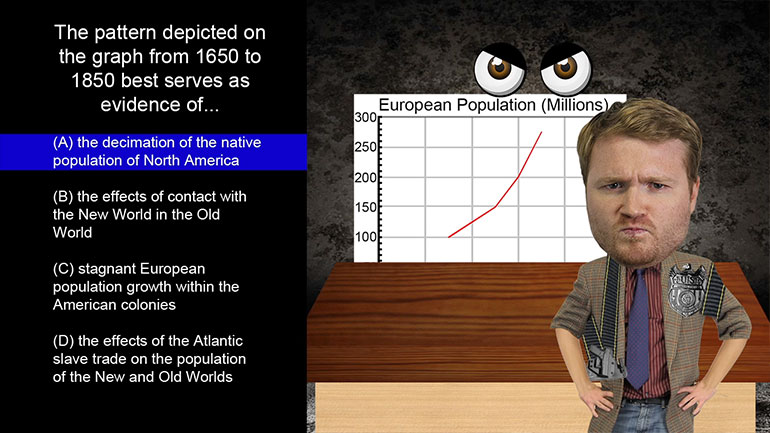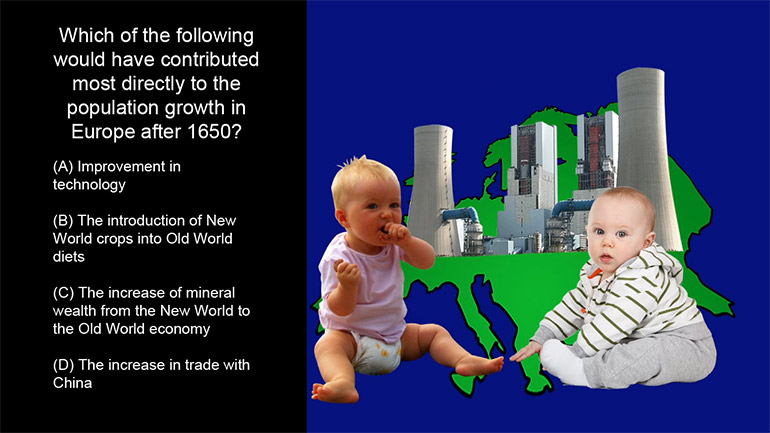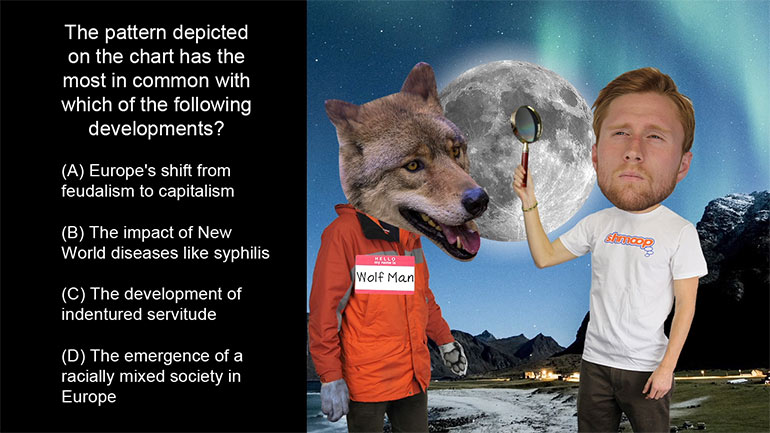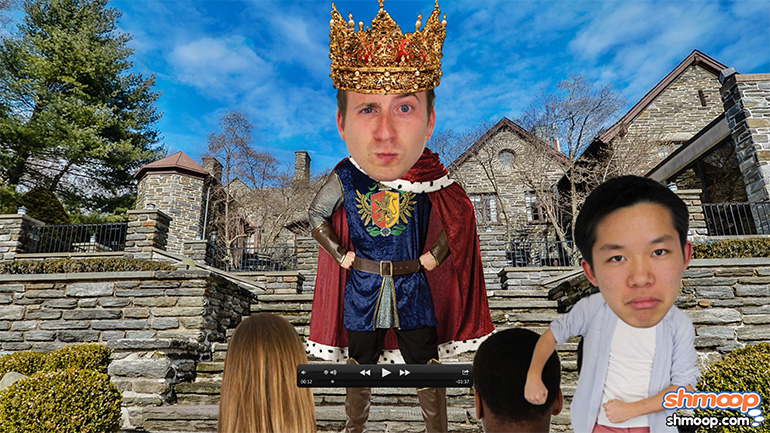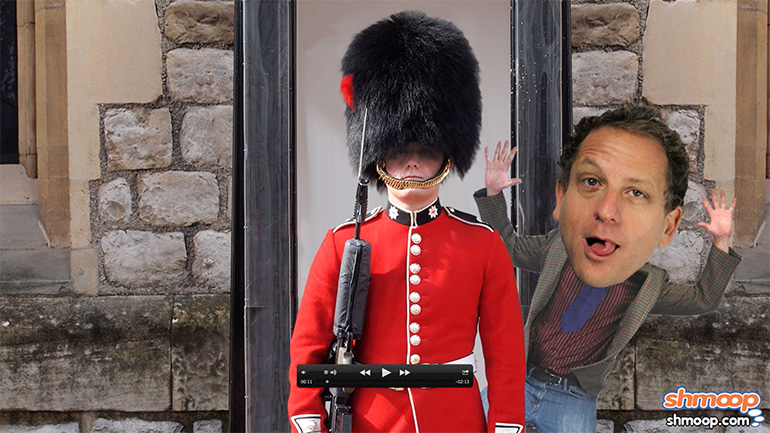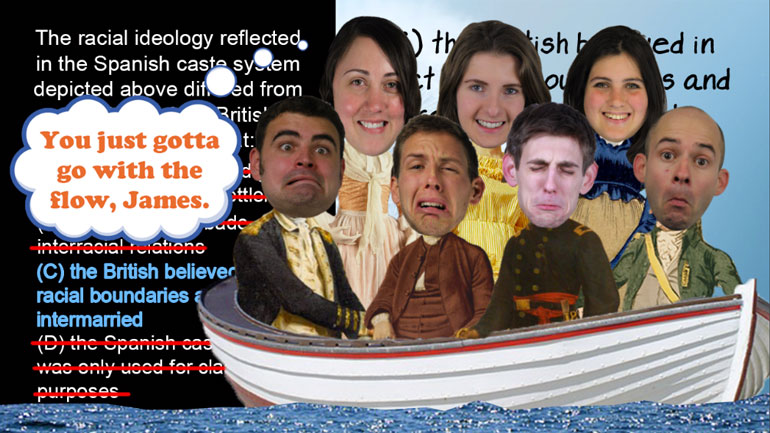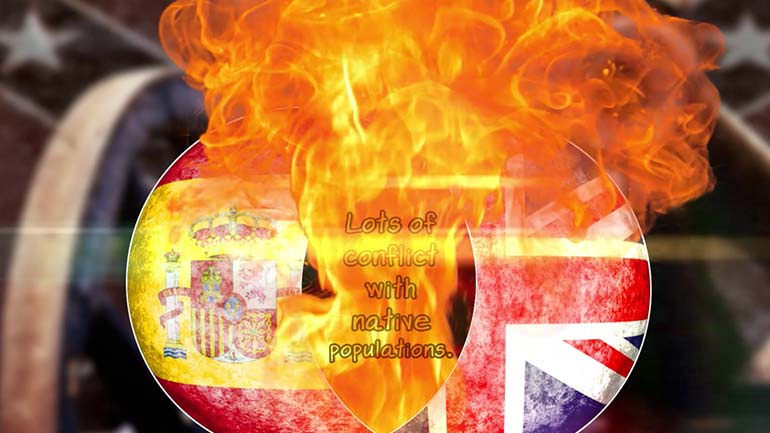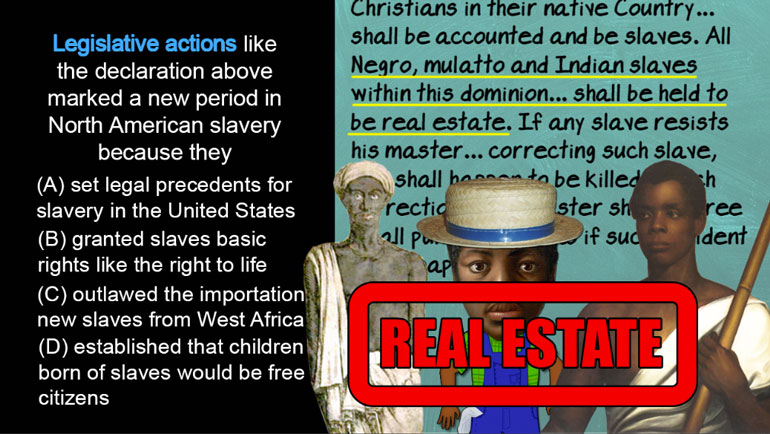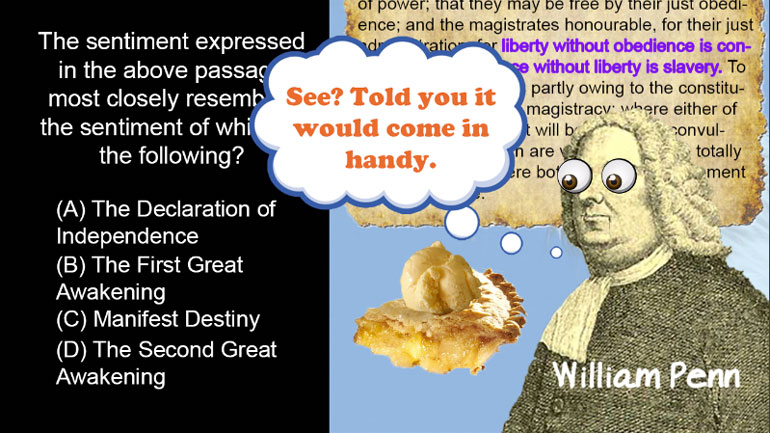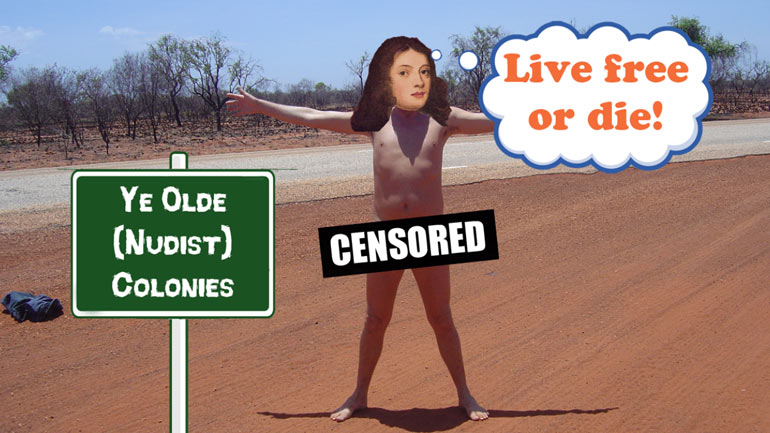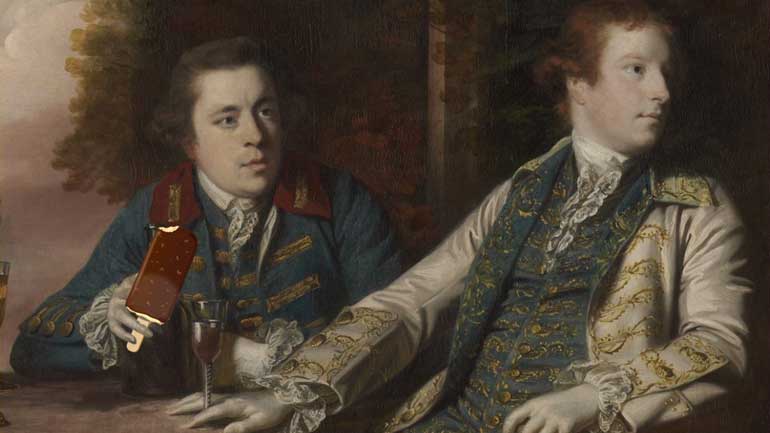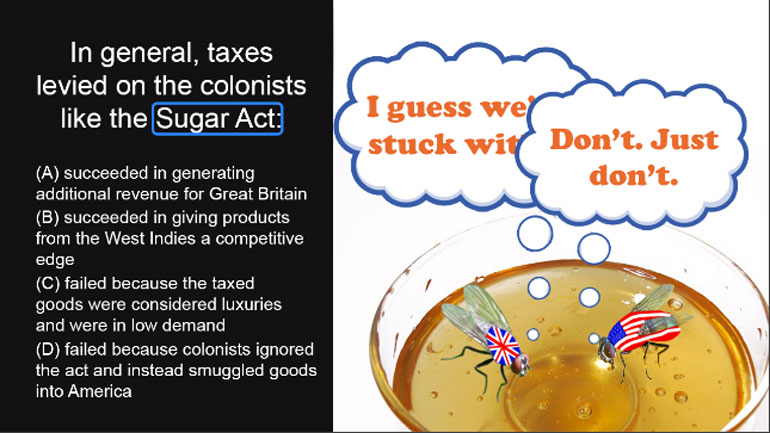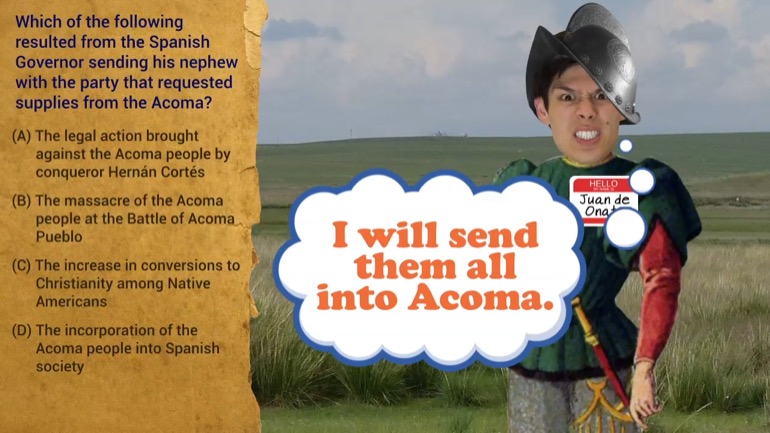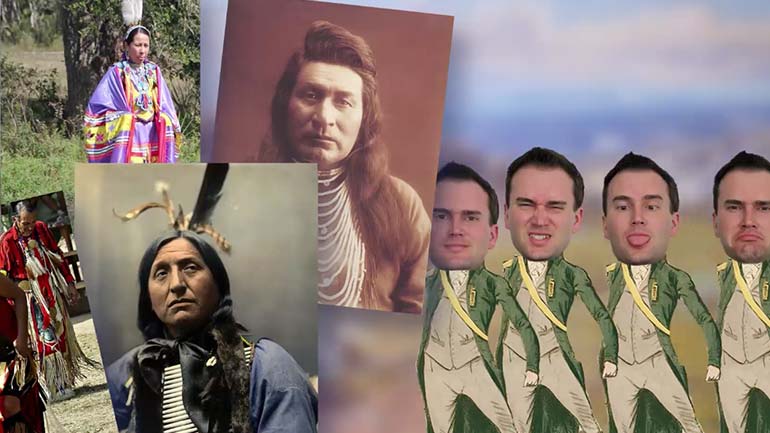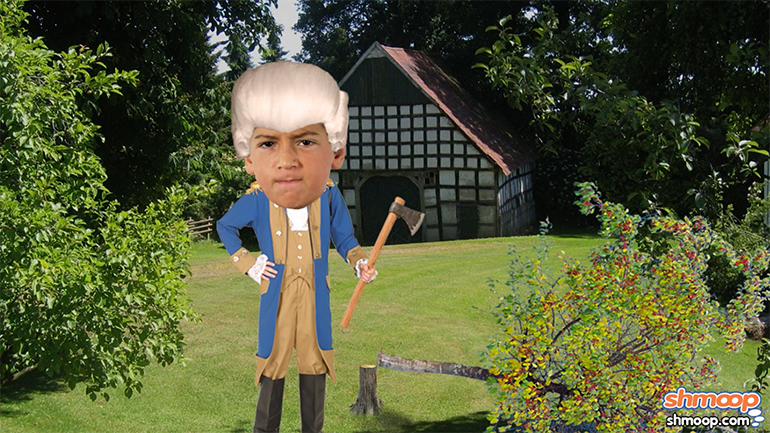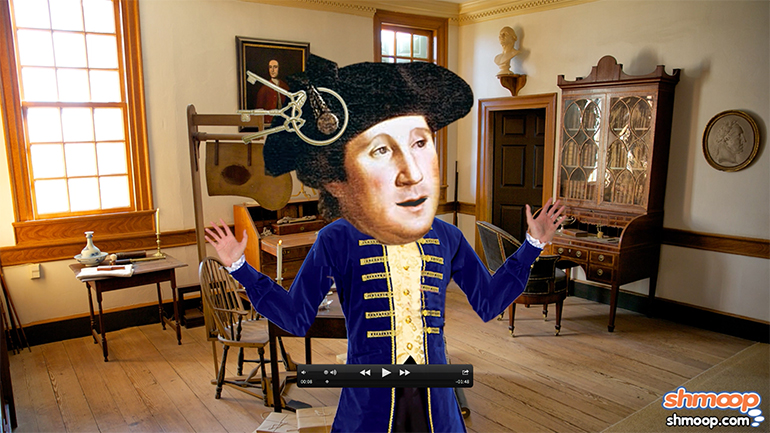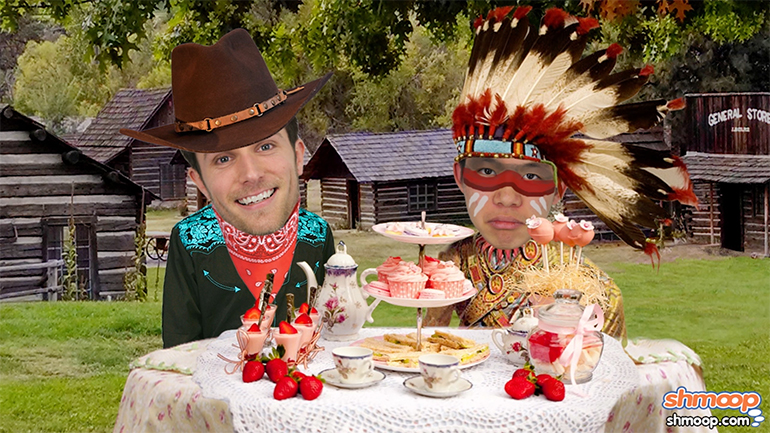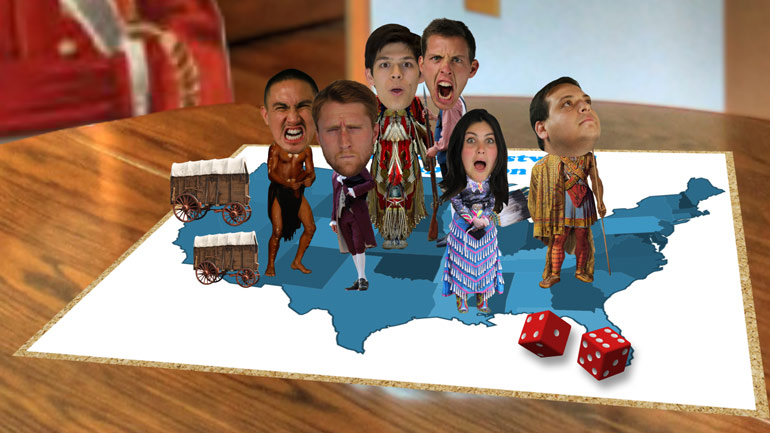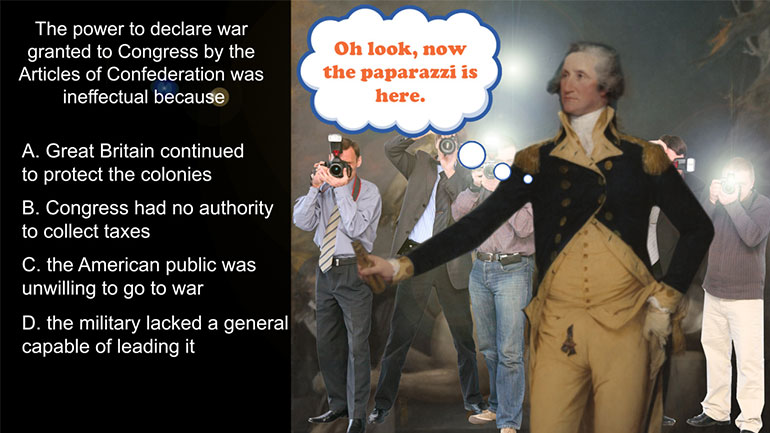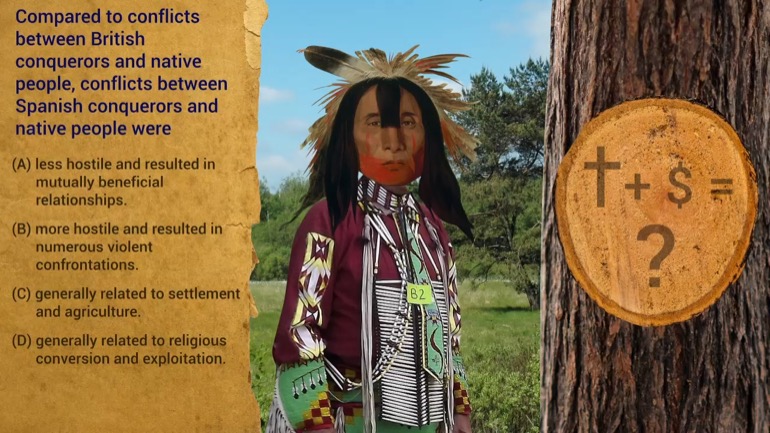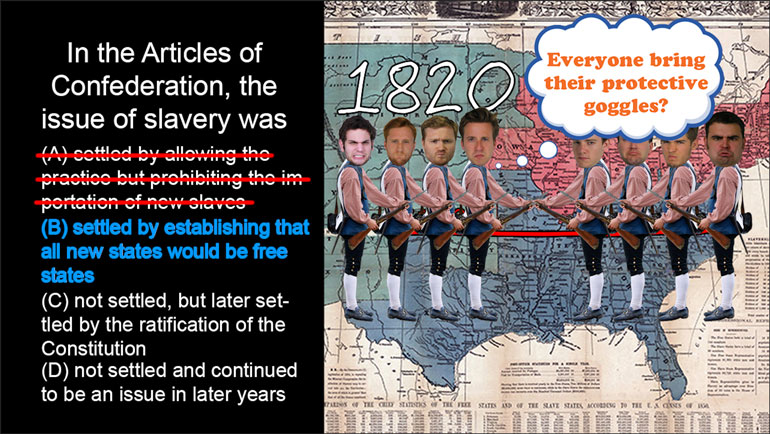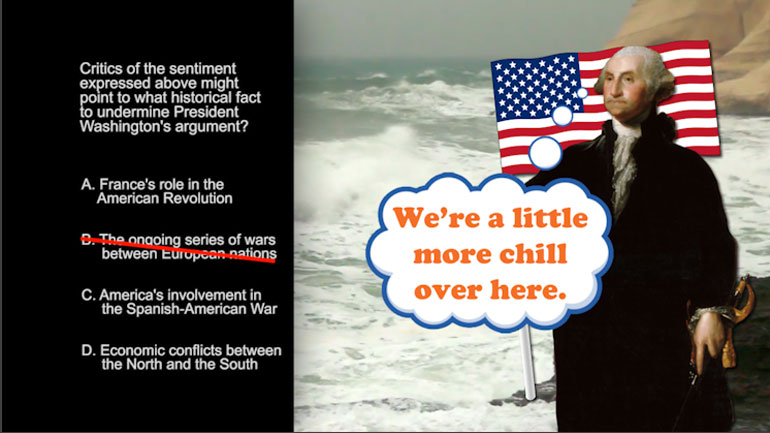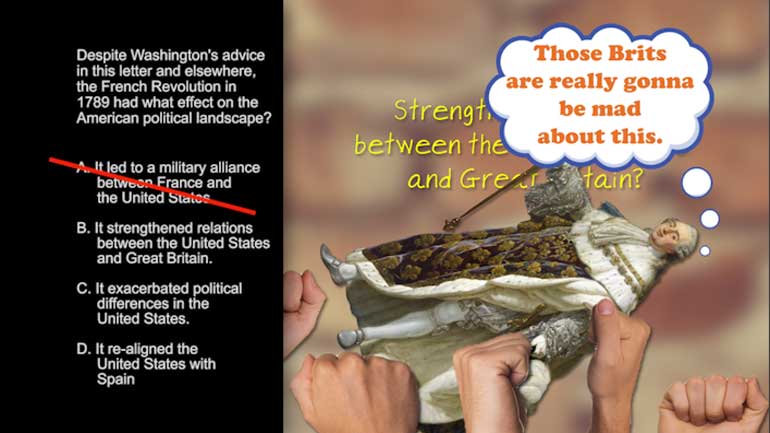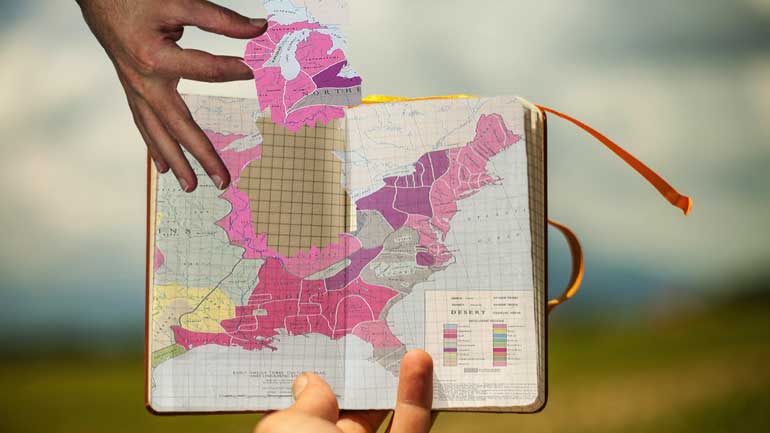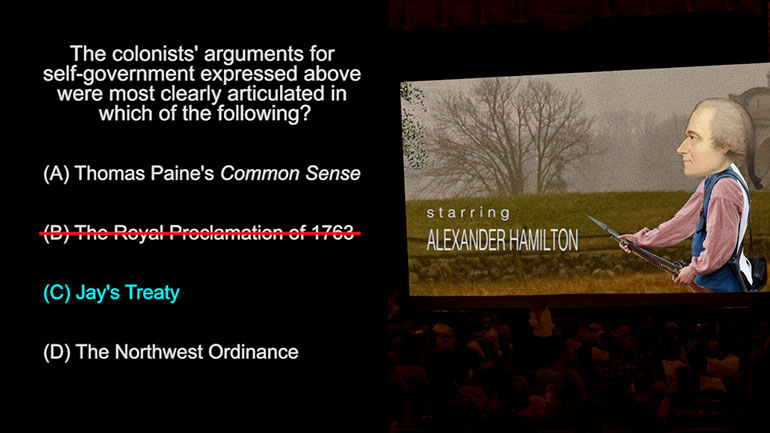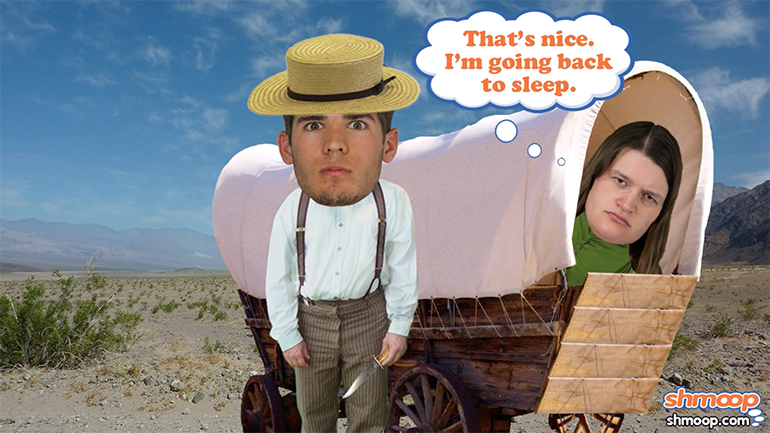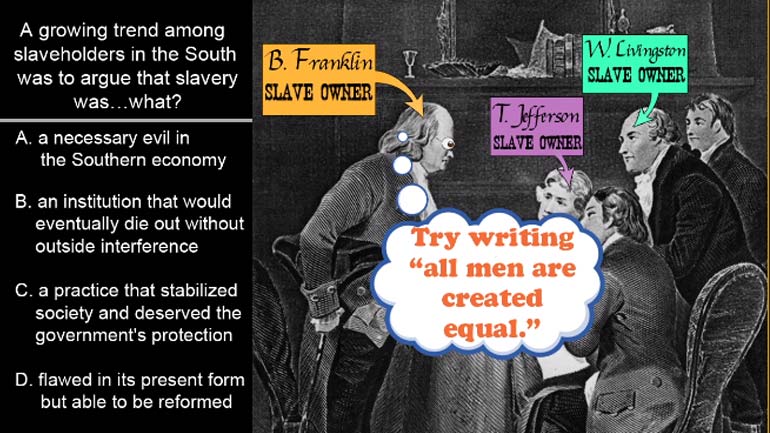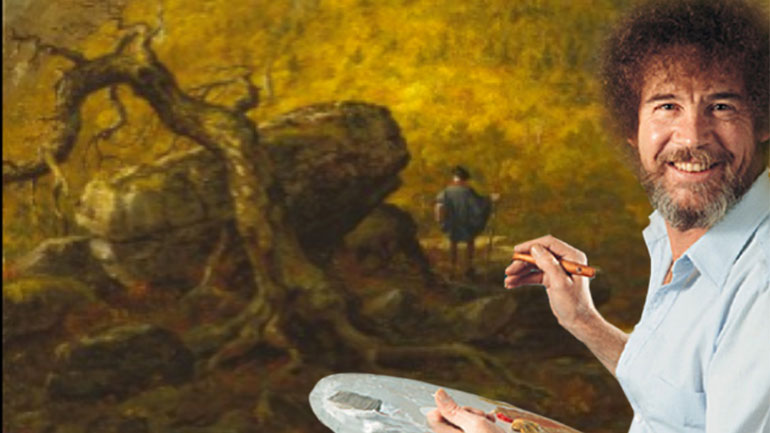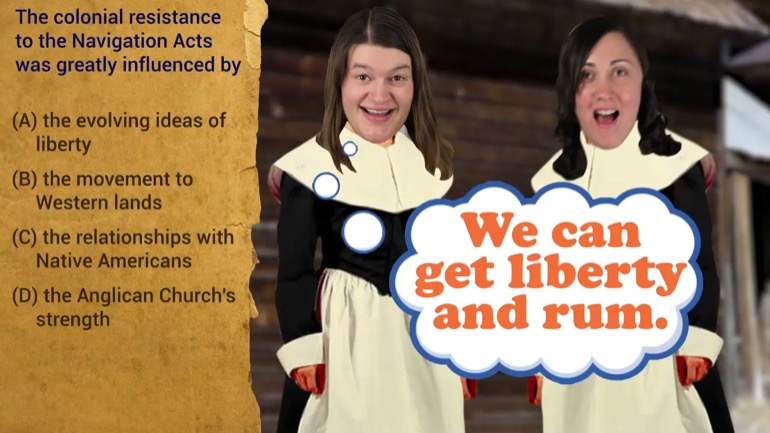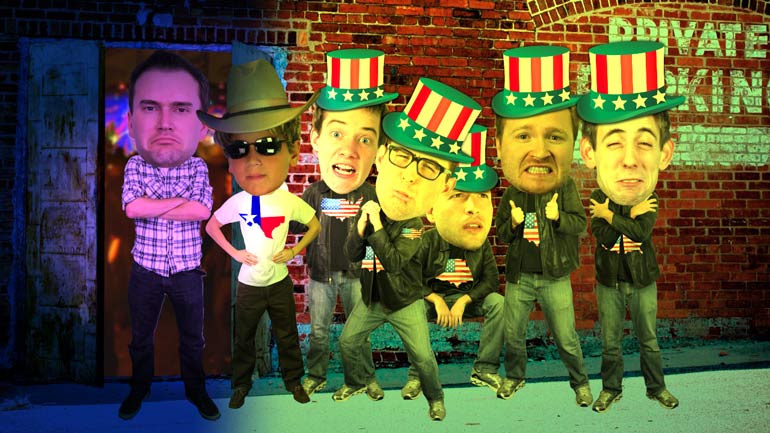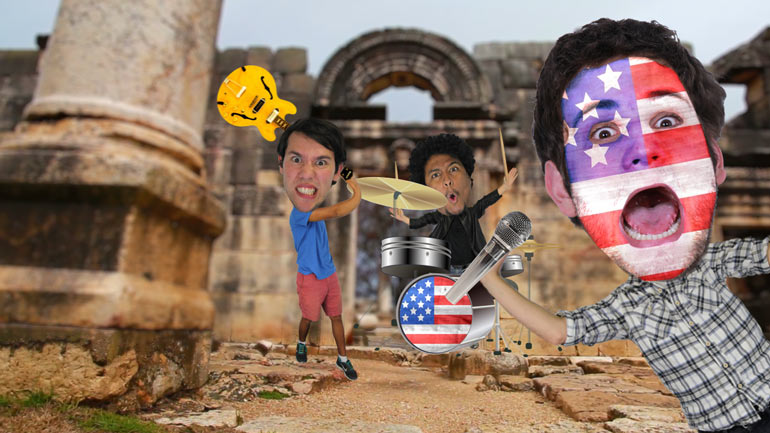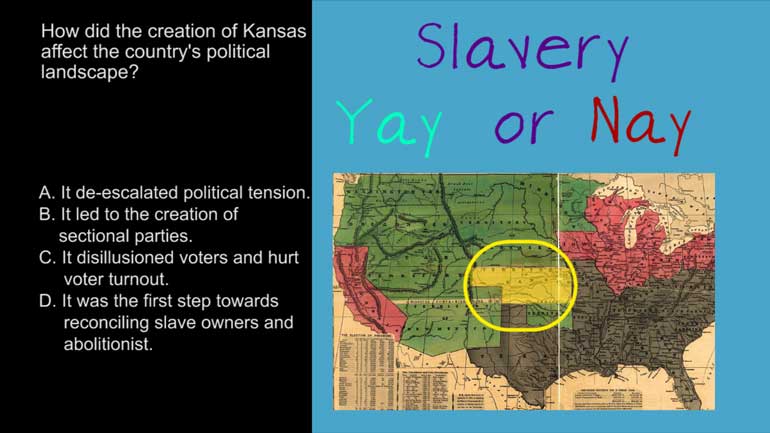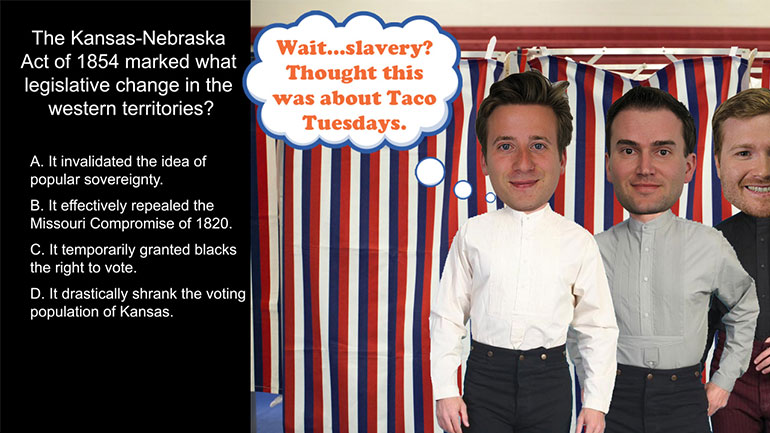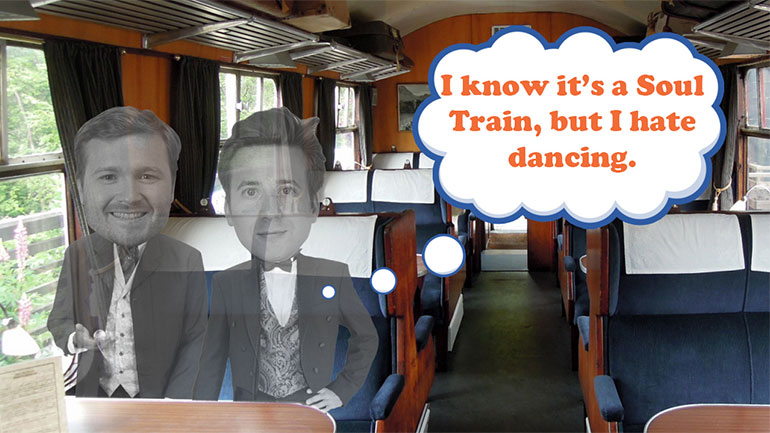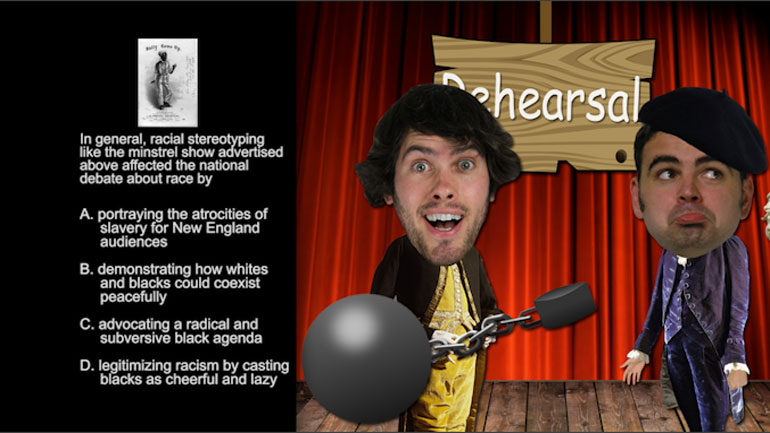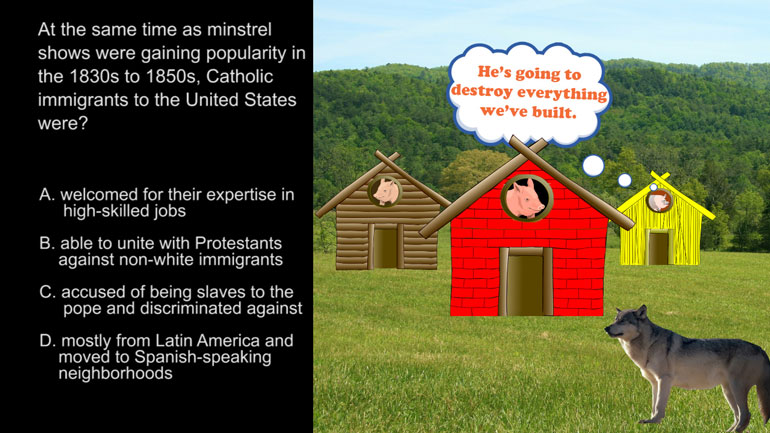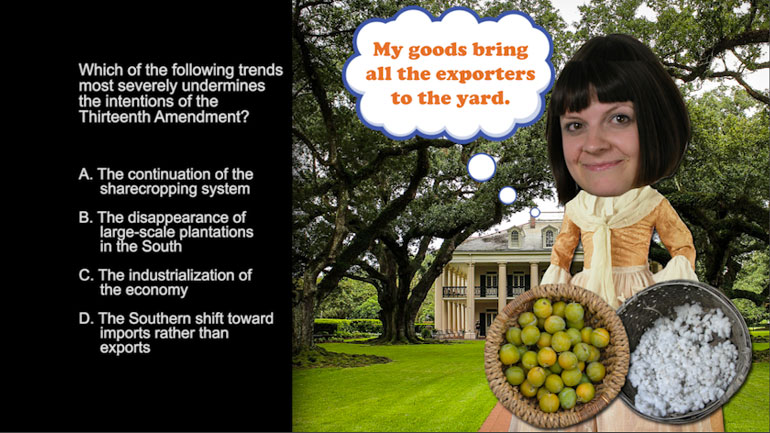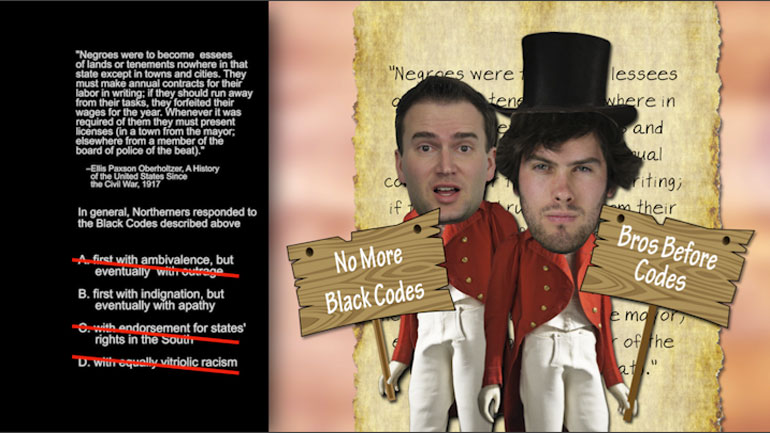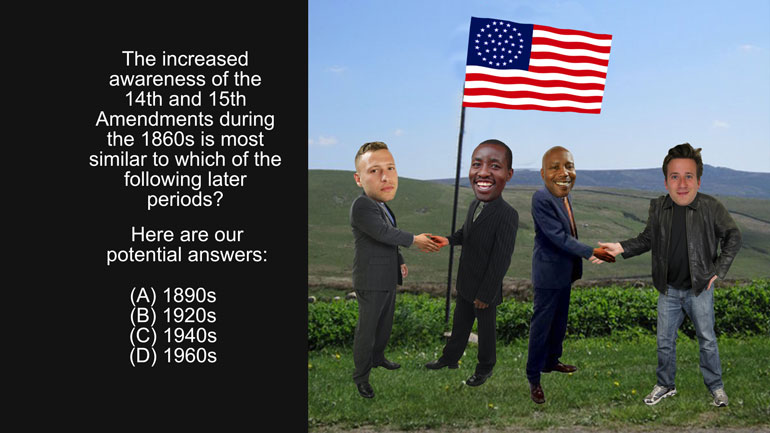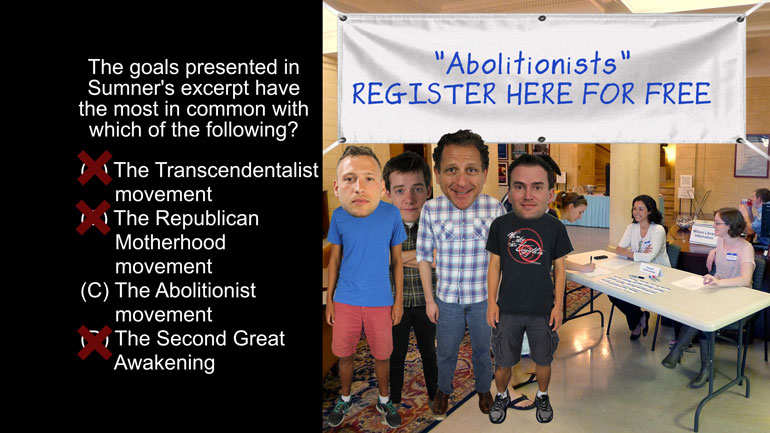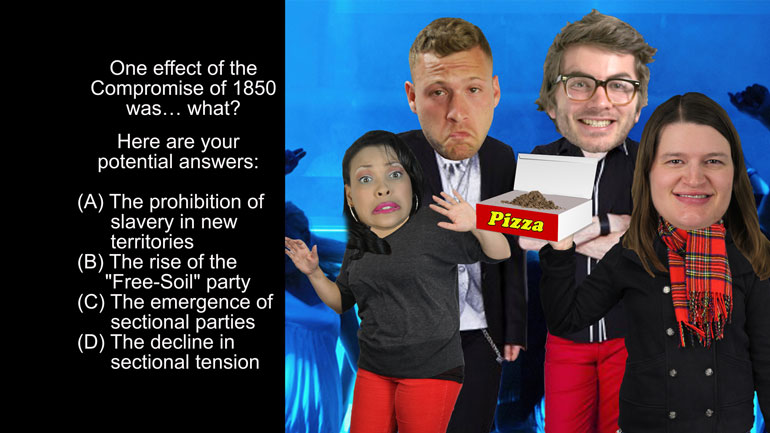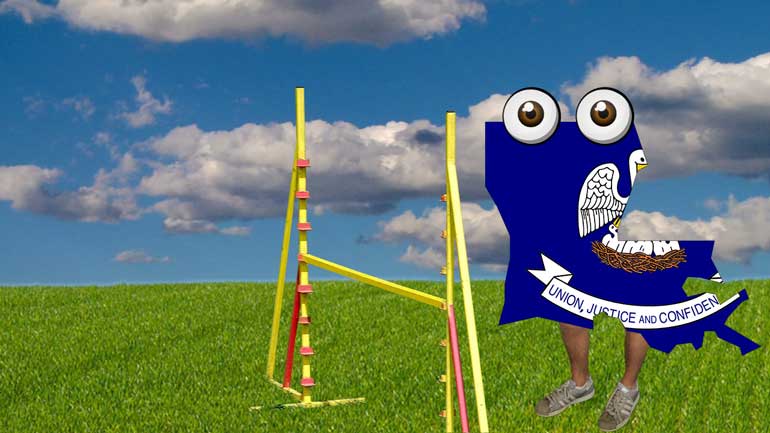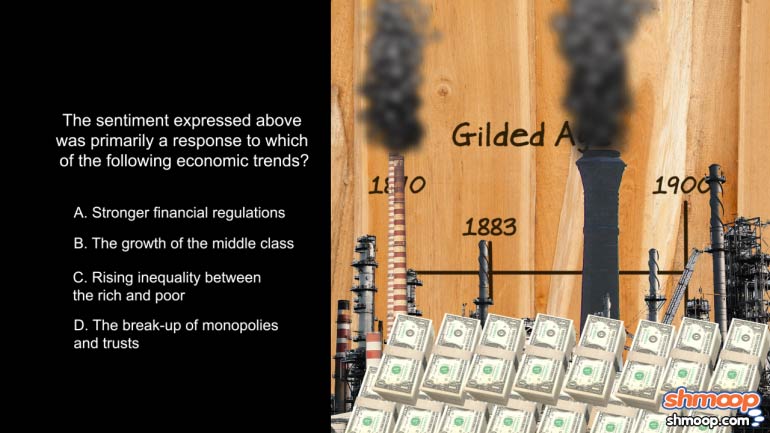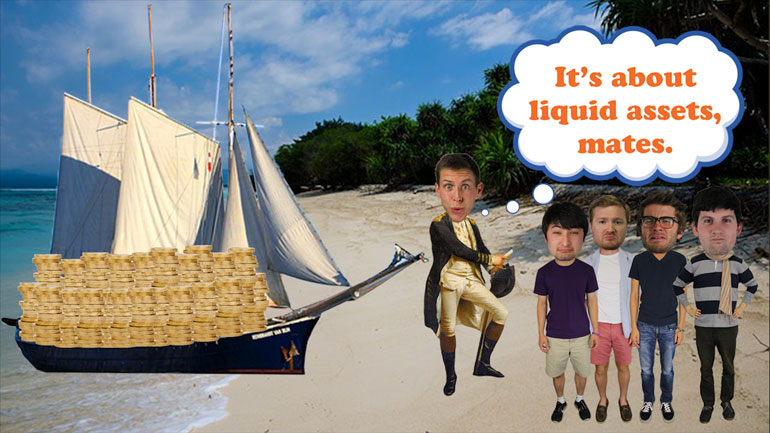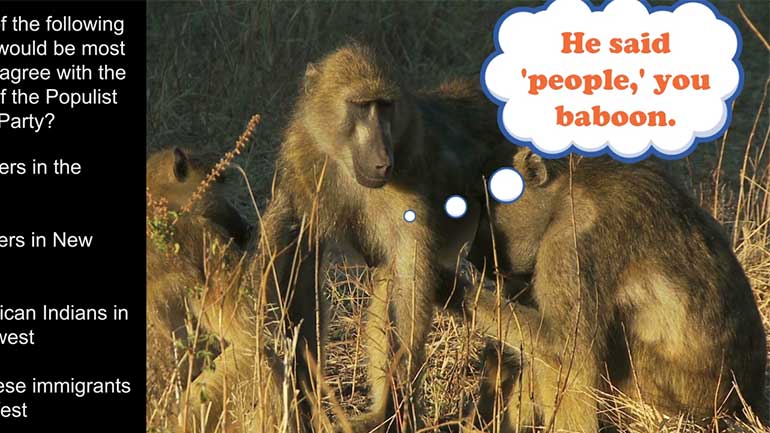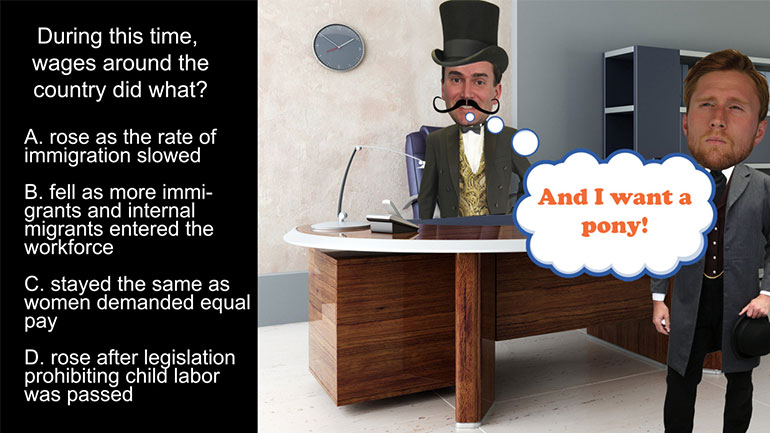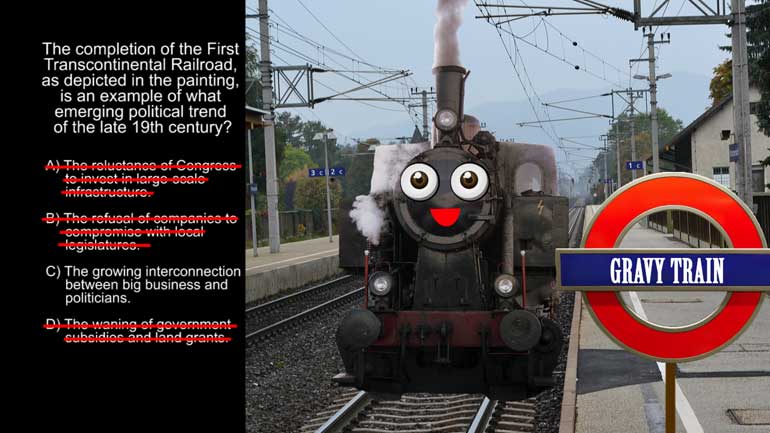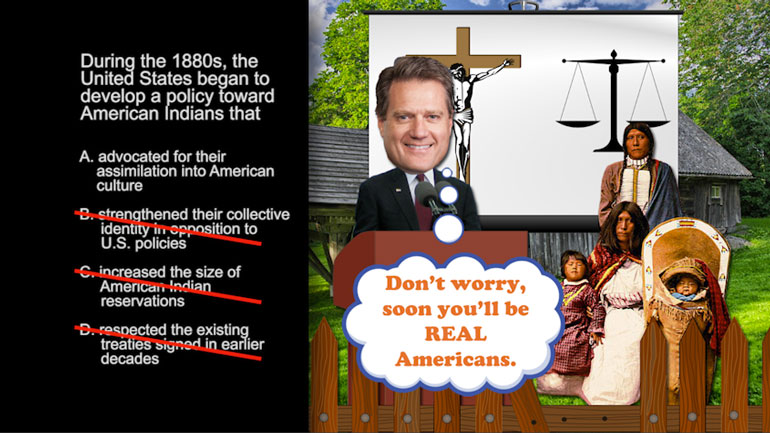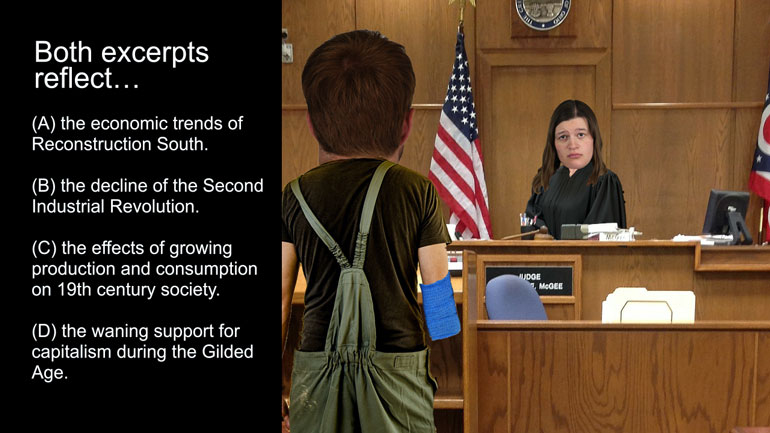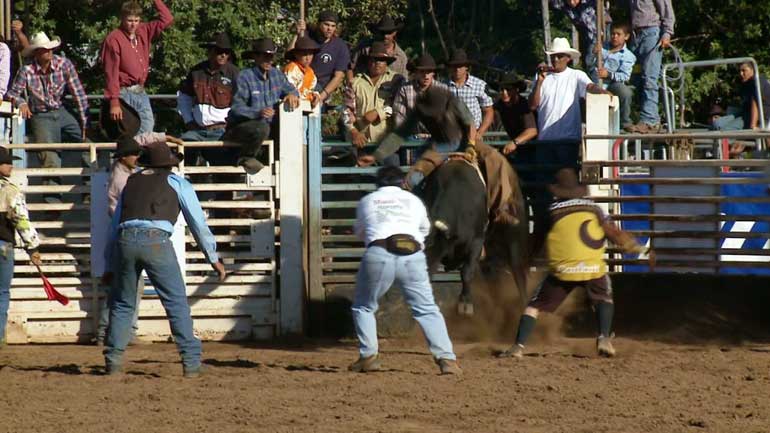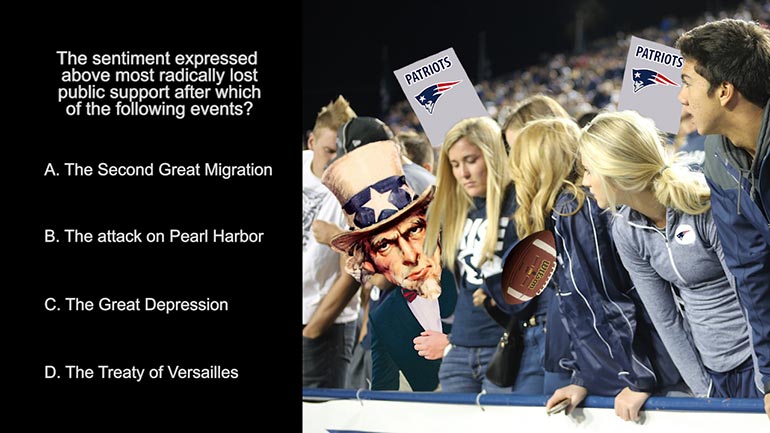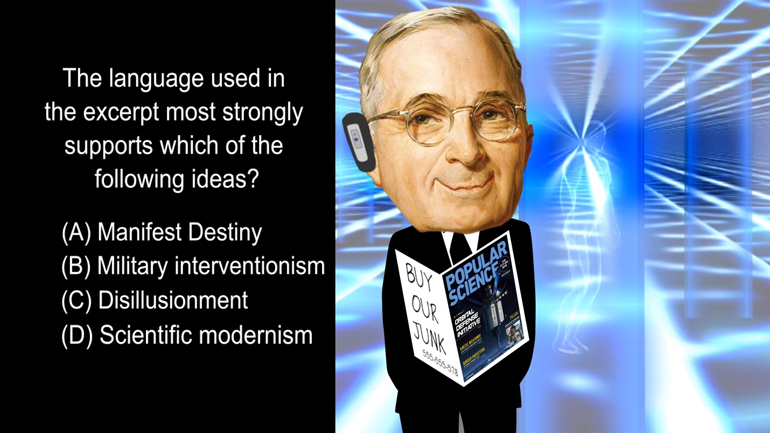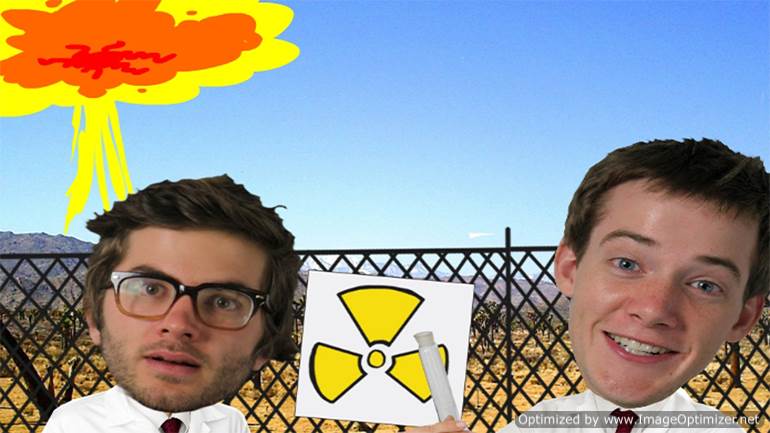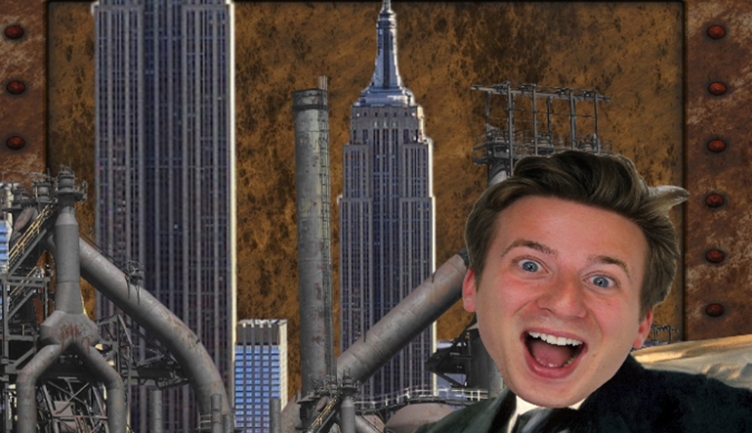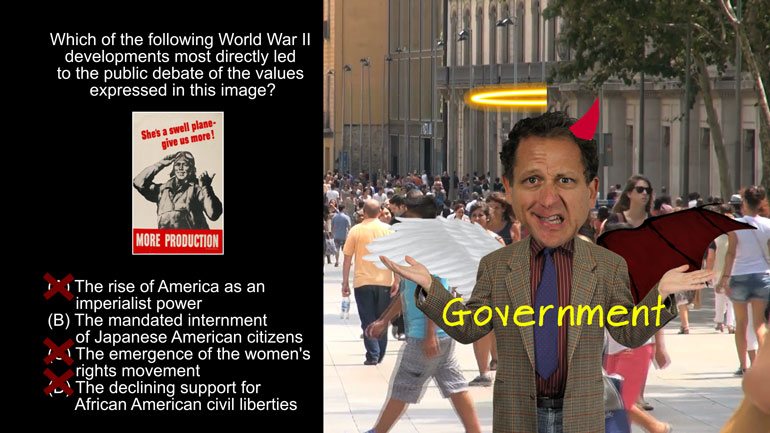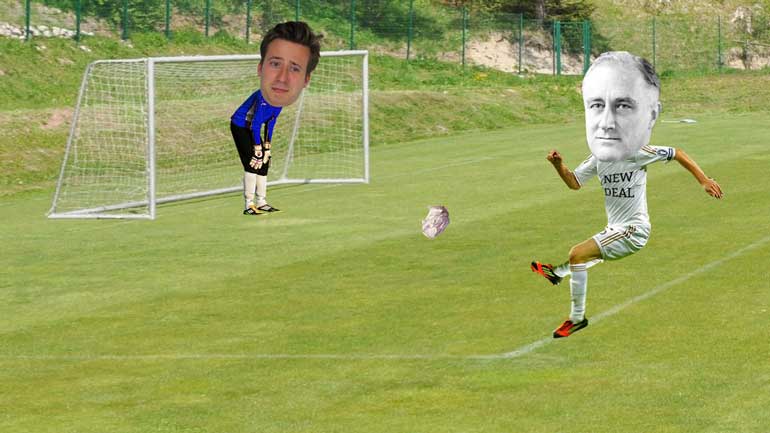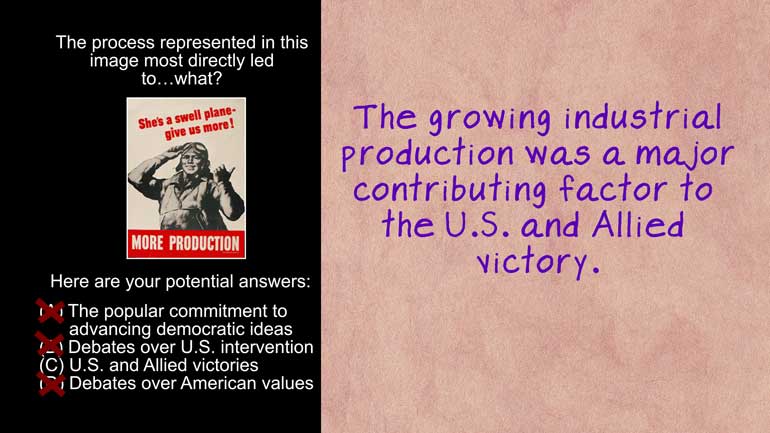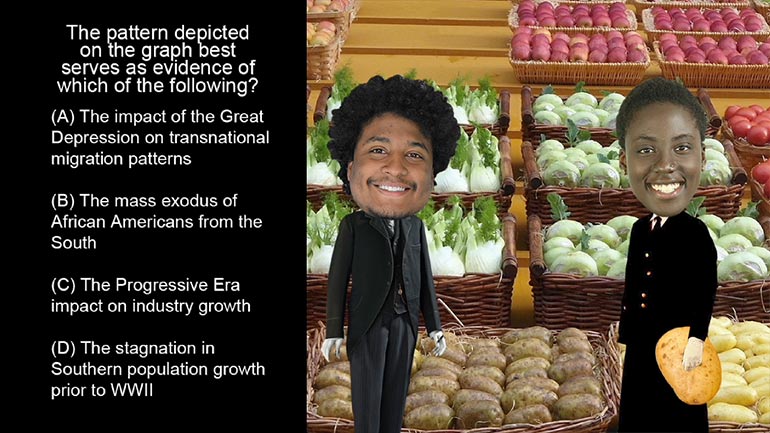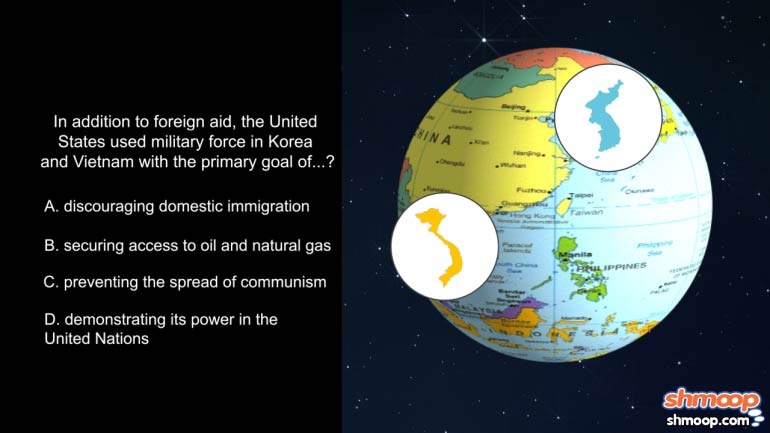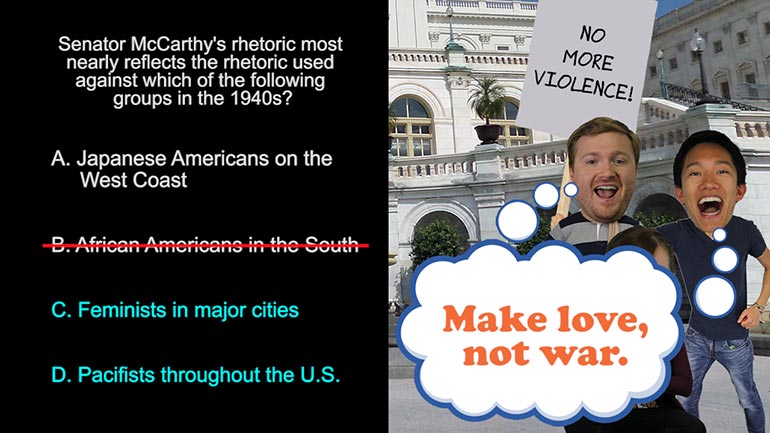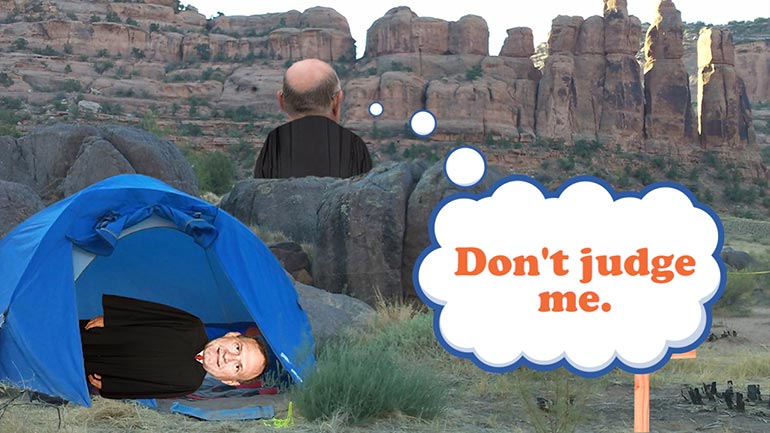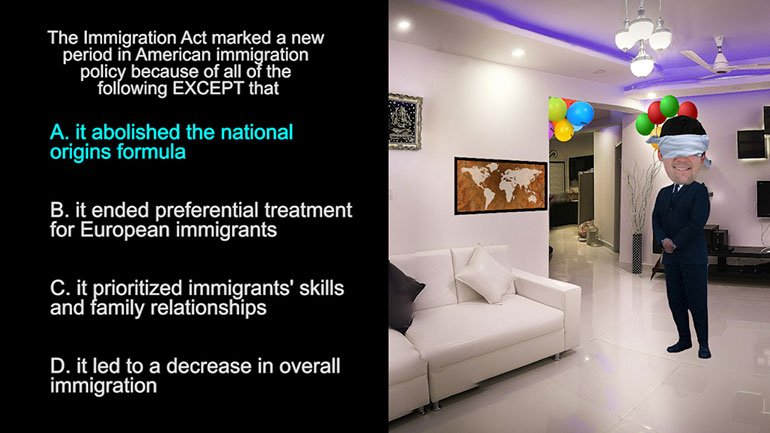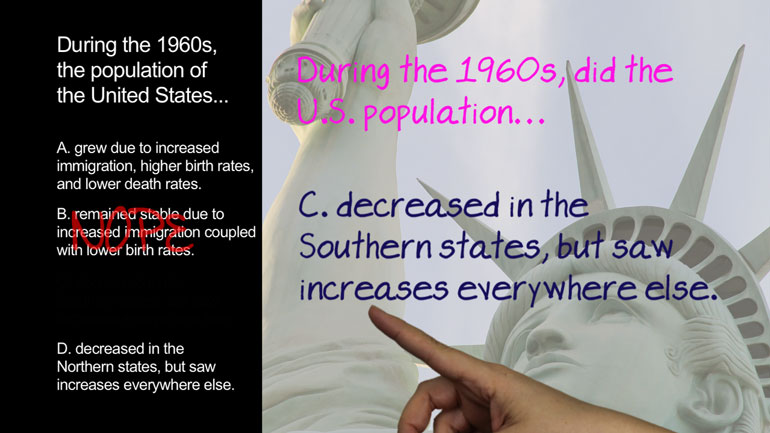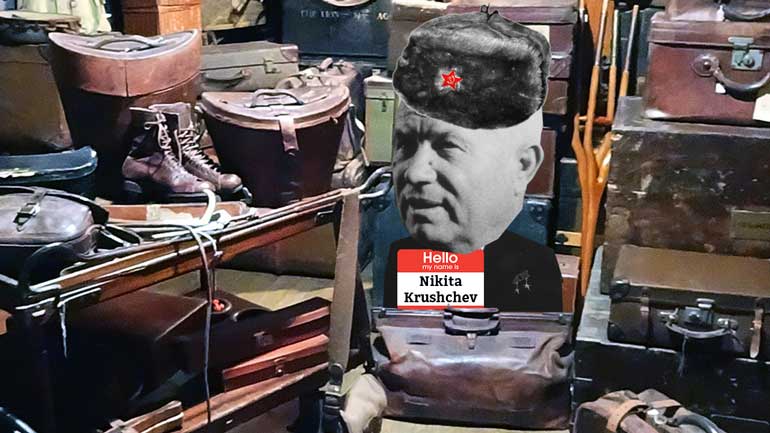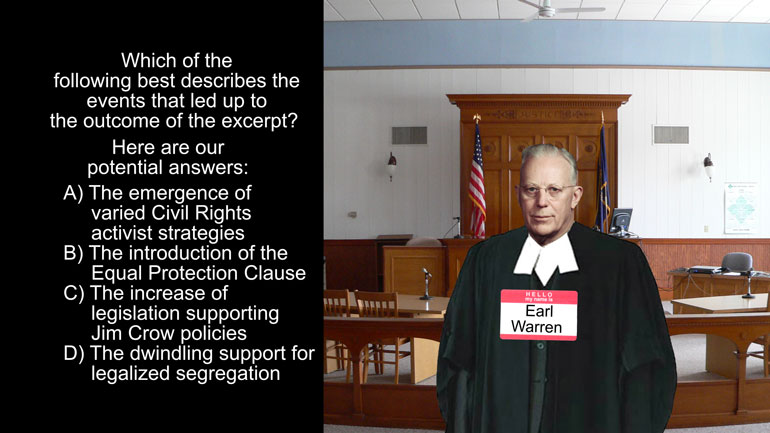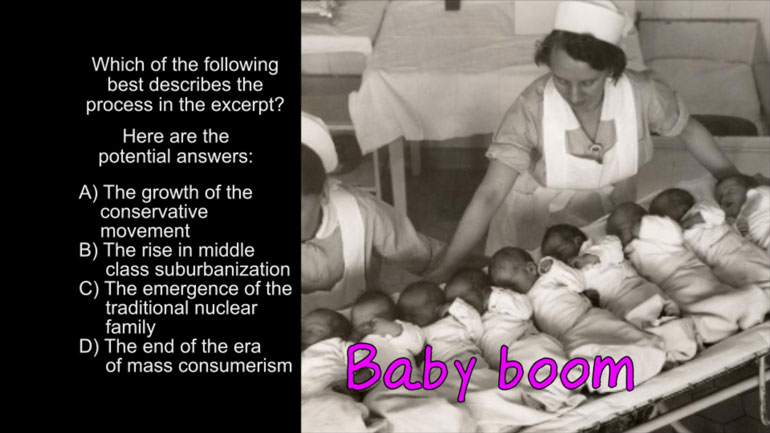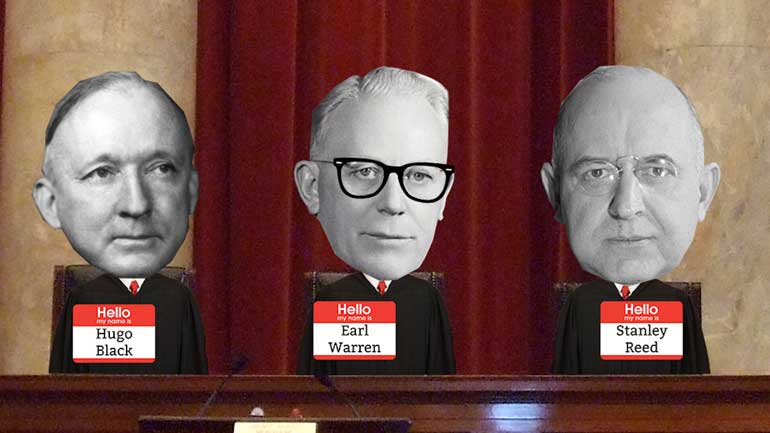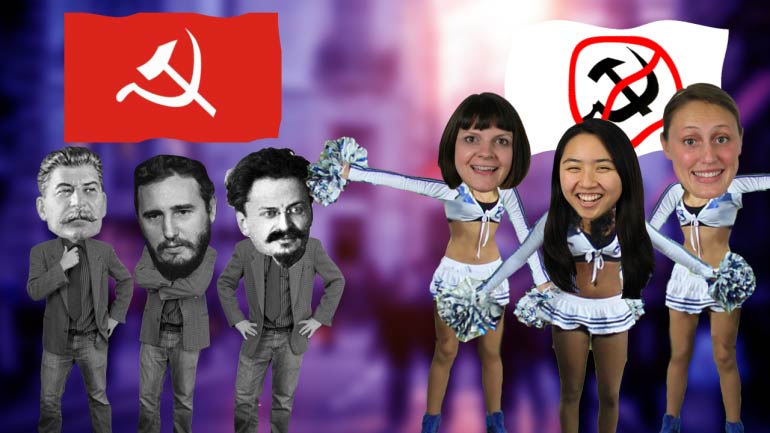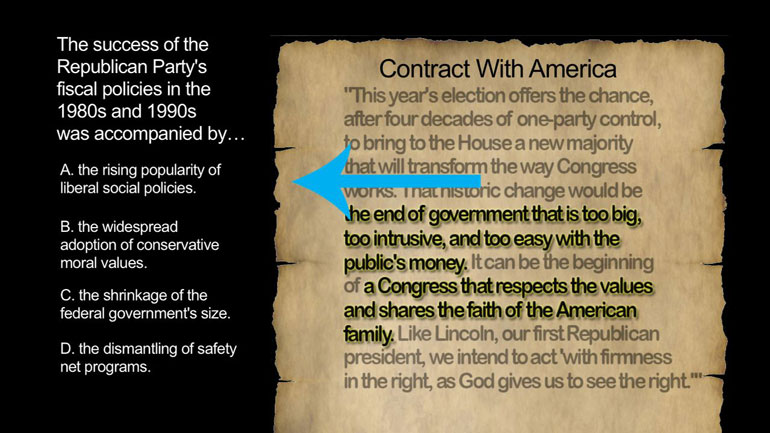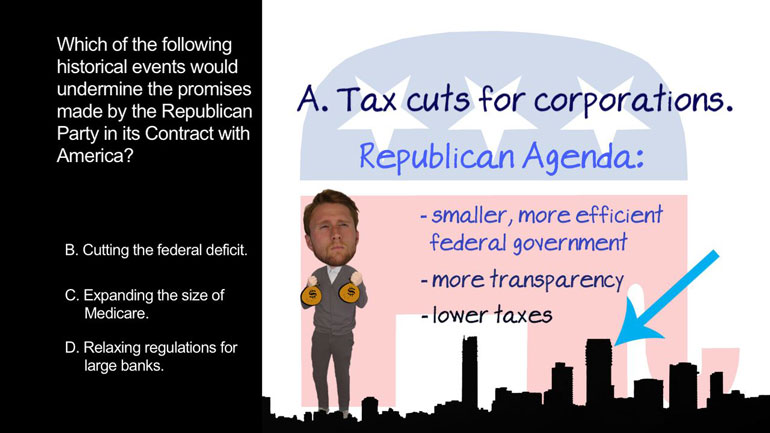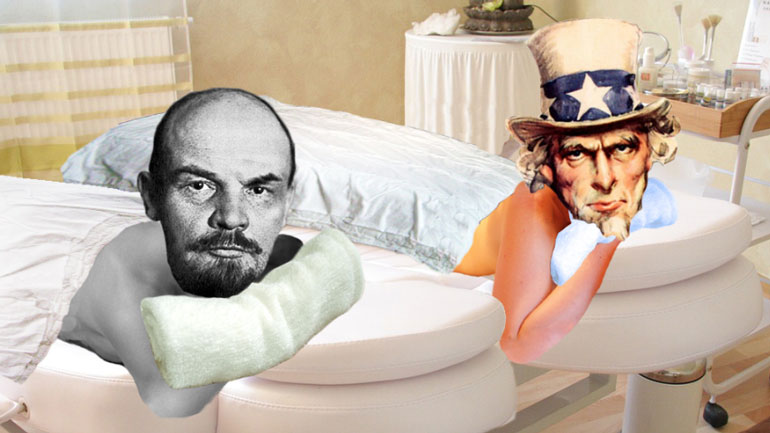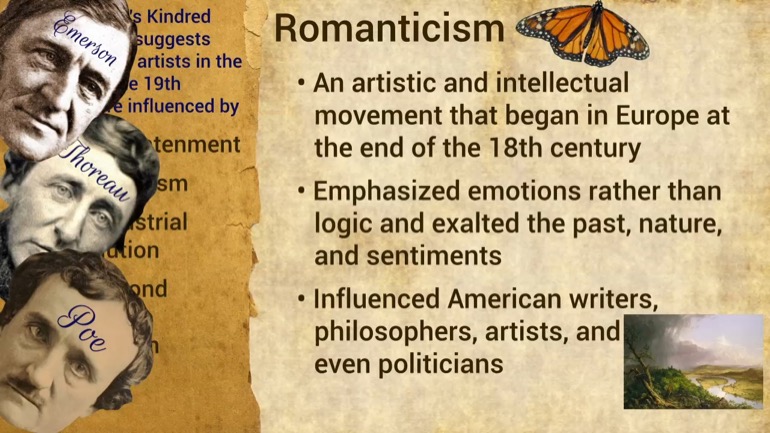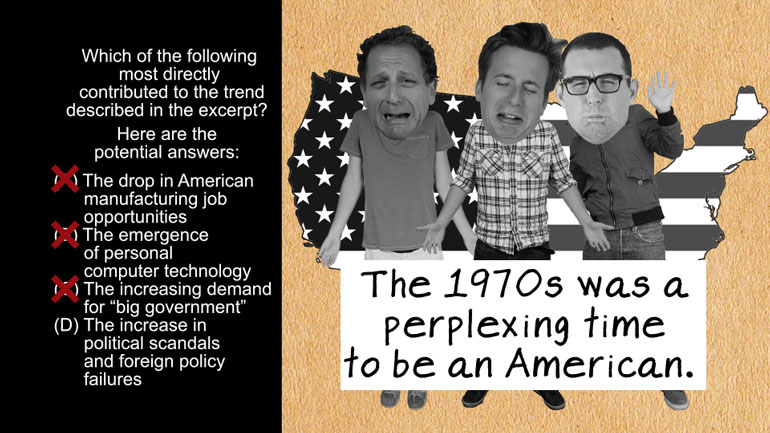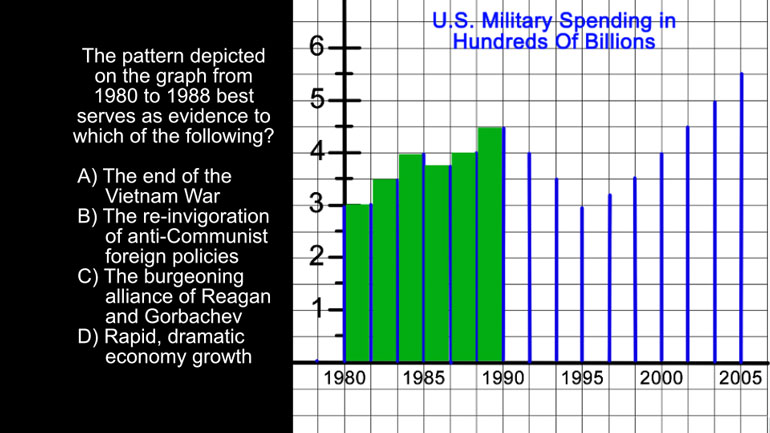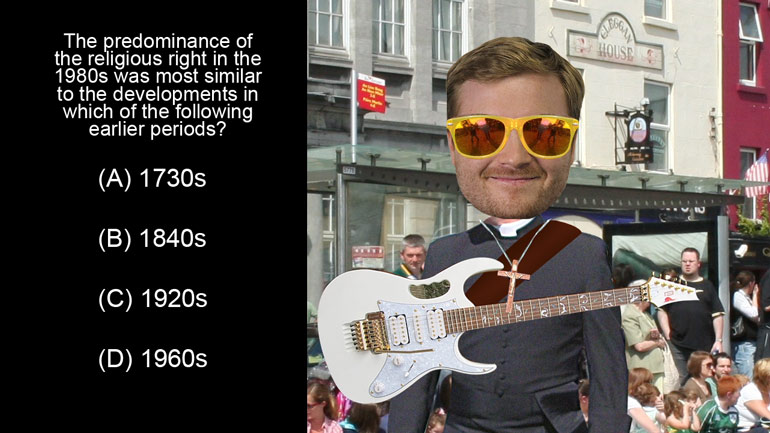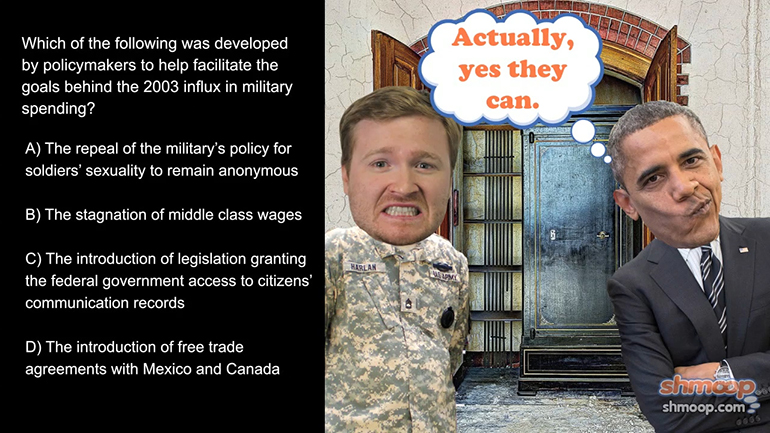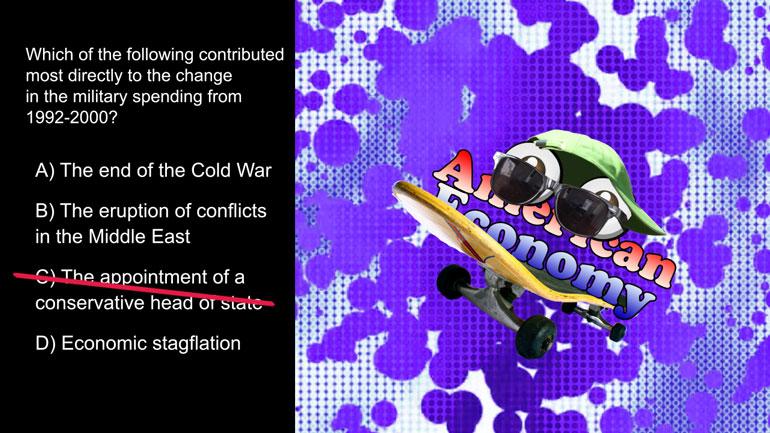ShmoopTube
Where Monty Python meets your 10th grade teacher.
Search Thousands of Shmoop Videos
AP U.S. History Videos
AP U.S. History Exam 2.48. Which of the following had the greatest influence on the movement Steinem refers to in the excerpt?
Exam Videos 129 videos
AP U.S. History Exam 1.47. Which of the following was a legislative decision that secured the advancement of the civil rights addressed by the judi...
AP U.S. History Diagnostic 1. Relationships like the one shown in the image resulted in the development of...what?
AP U.S. History Diagnostic 15. How did groups like the ones represented by the image influence industry in America?
Period 1: 1491–1607 Videos 20 videos
What kind of economic model did New England's environment encourage the Iroquois, and similar cultures, to adopt?
AP U.S. History 1.2 Period 1: 1491-1607. The introduction of European goods to the Great Plains affected the native population in all of the follow...
AP U.S. History: Period 1: 1491–1607. Drill 1, Problem 3. Increased colonization of the New World was partly facilitated by which of the followin...
Period 2: 1607–1754 Videos 18 videos
AP U.S. History 4.4 Period 2: 1607-1754. One direct effect of the imposition of the goals presented in the image was...what?
AP U.S. History 4.5 Period 2: 1607-1754. The goals presented in the image have the most in common with which of the following legislative developme...
AP U.S. History 1.1 Period 2: 1607–1754. The racial ideology reflected in the Spanish caste system depicted above differed from the views of the...
Period 3: 1754–1800 Videos 20 videos
AP U.S. History 3.1 Period 3: 1754-1800. Which of the following best describes the goals of the Stamp Act?
AP U.S. History 3.2 Period 3: 1754-1800. The enactment of the goals expressed in the excerpt directly led to...what?
AP U.S. History 3.3 Period 3: 1754-1800. The argument in the excerpt directly reflects a continuation of which of the following Enlightenment belie...
Period 4: 1800-1848 Videos 18 videos
AP U.S. History 1.1 Period 4: 1800-1848. The "separation" that the American Colonization Society advocates for is...what?
AP U.S. History 1.2 Period 4: 1800-1848. A growing trend among slaveholders in the South was to argue that slavery was...what?
AP US History: Politics in Antebellum America Drill 1, Problem 1. Expanding government and regulation into the Louisiana territory proved chal...
Period 5: 1848-1877 Videos 18 videos
AP U.S. History 1.1 Period 5: 1848-1877. Which of the following groups would be most likely to support the idea of Manifest Destiny?
AP U.S. History 1.2 Period 5: 1848-1877. Before the Civil War, the idea of Manifest Destiny was most complicated by which of the following issues?
AP U.S. History: Religion and Reform in Antebellum America Drill 1, Problem 2. How did the creation of Kansas affect the country's political l...
Period 6: 1865-1898 Videos 11 videos
AP U.S. History 1.1 Period 6: 1865-1898. The sentiment expressed above was primarily a response to which of the following economic trends?
How did the wealthy justify their status and privilege? Other than the customary way of having large gold statues built in their likeness with sign...
AP U.S. History 1.3 Period 6: 1865-1898. Which of the following groups would be most likely to agree with the goals of the Populist Party?
Period 7: 1890–1945 Videos 19 videos
AP U.S. History 1.1 Period 7: 1890–1945. The Clayton Antitrust Act marked a new period in American labor relations because it...what?
AP U.S. History 1.2 Period 7: 1890-1945. Antitrust laws like the Clayton Act were a direct response to what development in the United States economy?
AP U.S. History 1.3 Period 7: 1890-1945. How did the rise of the corporations affect the social order of the time?
Period 8: 1945-1980 Videos 19 videos
In this AP U.S. History question read the excerpt and determine how it reflects on conceptual shifts in American Foreign Policy. AP U.S. His...
AP U.S. History: Industrial American in 19th Century Drill 1, Problem 5. In addition to foreign aid, the United States used military force in Korea...
AP U.S. History: Urban Society in 19th Century Drill 1, Problem 1. In this AP U.S. History question figure out how the cutoff of oil in Americ...
Period 9: 1980-Present Videos 17 videos
AP U.S. History 1.1 Period 9: 1980-Present. The success of the Republican Party's fiscal policies in the 1980s and 1990s was accompanied by...what?
AP U.S. History 1.2 Period 9: 1980-Present. Which of the following historical events would undermine the promises made by the Republican Party in i...
AP U.S. History 1.3 Period 9: 1980-Present. Reagan's statement reflects what shift in American relations with regards to the Soviet Union?
